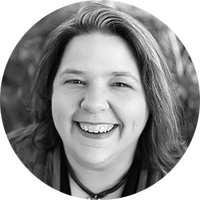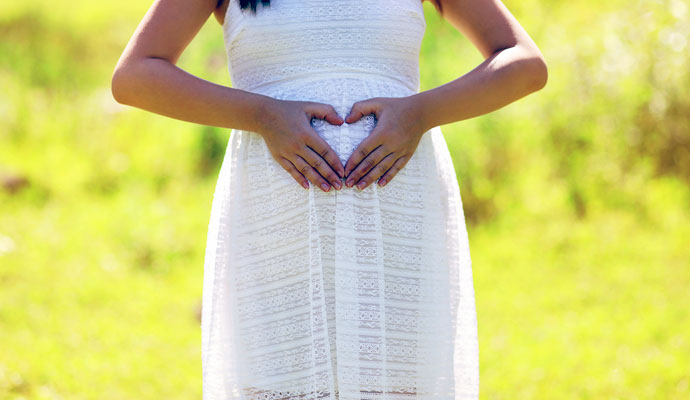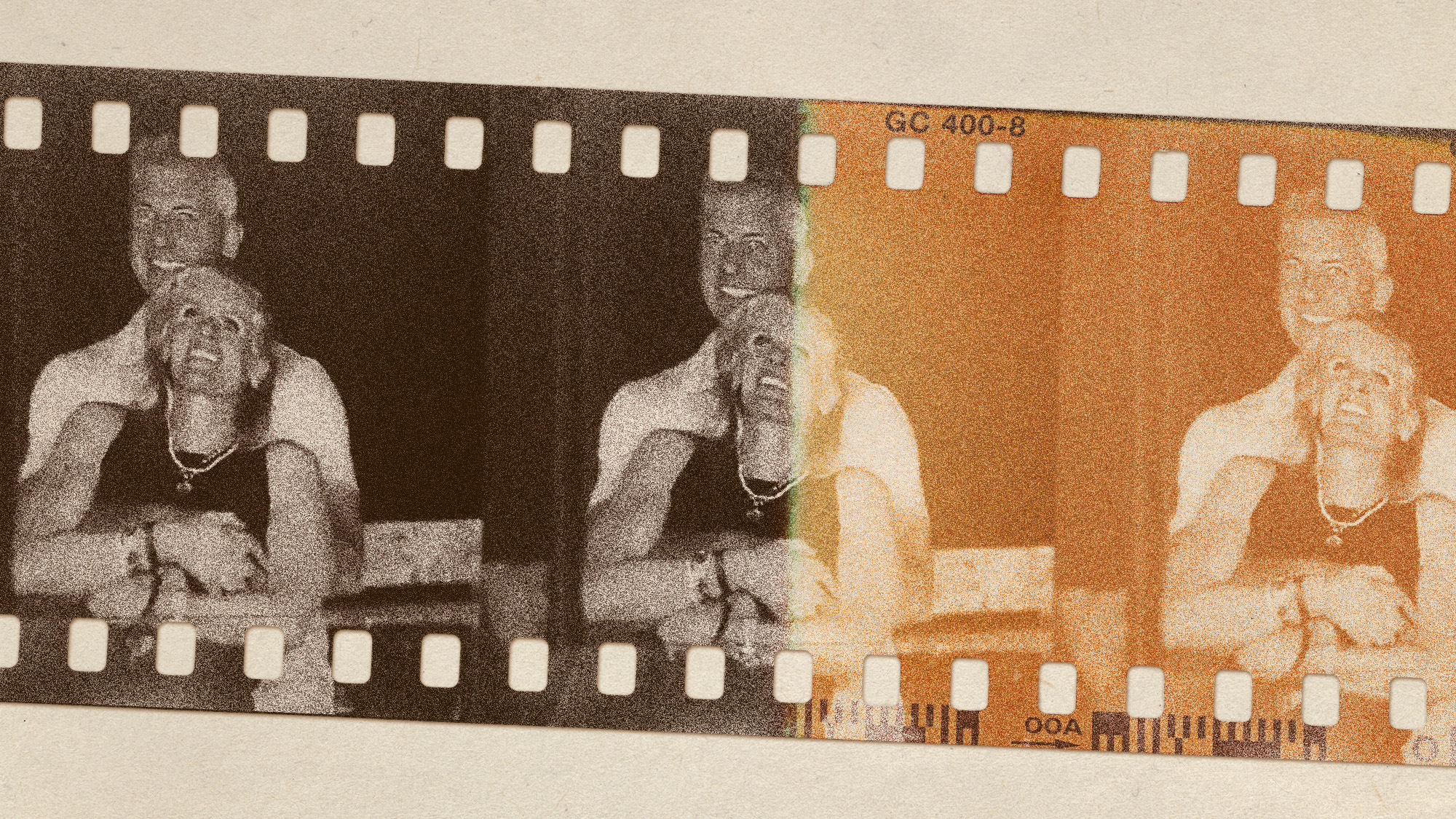Inside the rise of embryo adoption
Meet the Kershners, a Christian family who has adopted the fertilized eggs of another couple


Odessa Kershner is five weeks pregnant. However her babies, possibly triplets, have been inside her body for only three. And they're technically adopted.
Here's how that's possible.
She and her husband, Jeff, have wanted more children for years. But Jeff, a computer programmer for the Oregon Department of Transportation, struggles with Crohn's disease and colitis, which they were just beginning to understand could be transmitted genetically after the birth of their biological daughters. Besides, they had always felt called to adopt.
The Week
Escape your echo chamber. Get the facts behind the news, plus analysis from multiple perspectives.

Sign up for The Week's Free Newsletters
From our morning news briefing to a weekly Good News Newsletter, get the best of The Week delivered directly to your inbox.
From our morning news briefing to a weekly Good News Newsletter, get the best of The Week delivered directly to your inbox.
Despite their qualifications as a stable, loving family, adoption turned out to be a nearly impossible undertaking. Private adoptions — even overseas — were too expensive. State adoptions through the foster system were more affordable, and they do want to foster eventually. But they intend to take older children who often need special attention and patience, which they can't guarantee with two little girls already in the home.
It was then that Odessa stumbled across an article about a different kind of adoption. In their quest for a larger family, the Kershners began to think outside the box, and inside the womb.

The leftovers
When a woman prepares for in vitro fertilization or egg donation, she is given drugs that induce her to create an excess of eggs. They are removed from her body, fertilized by either her partner's or donor sperm, and allowed to mature for a few days. When cell division is demonstrated, they become blastocysts, or as Jeff describes, "a group of little tiny eight-celled babies." The healthiest looking, usually two, are implanted in the mother's uterus.
A free daily email with the biggest news stories of the day – and the best features from TheWeek.com
When there are leftover embryos, they are frozen and put into storage. There they sit, sometimes for decades, ostensibly waiting should the parents of their "siblings" want more children, or if the initial IVF rounds fail.
Kimberly Tyson is the Marketing and Programing Director for Nightlight Christian Adoptions, a nonprofit whose subsidiary Snowflakes was the first embryonic adoption program in the world. She says there are currently around 600,000 frozen embryos in storage. Many of which have no one coming back to claim them.
For families that are done using IVF to have children but still have leftover embryos, there are four options, according to Tyson. "One, keep the embryos frozen and continue to pay the annual storage fee for them — averaging $600.00 a year. Two, thaw the embryos and discard them. Three, donate the embryos for research, or four, donate the embryos to another family."
Only one option provides the embryos the chance to be born.
It isn't just those who believe, as the Kershners do, that each embryo is a soul under God's care who are uncomfortable with the first three options. Sometimes when a parent watches what they initially thought of as a cell cluster become their son or daughter, they have a hard time seeing just "cell clusters" ever again. Says Tyson:
Many of the people who choose to donate their embryos felt differently about their embryos when they first created them. They were simply focused on having a baby! Now they have had a baby or two or three born from this same group of embryos and the embryos now have new importance, a new reverence.
How to choose
The Kershners decided to utilize the embryo adoption program offered by the Overlake Clinic in Seattle. Fertility clinics like Overlake, (who did not respond to interview requests) are rare in that they collect, store, and adopt embryos all in one place, making them one of the cheapest ways to adopt outside the foster care system.
The Overlake Clinic keeps costs low by offering mainly medical procedures, which go for around $7,000, not counting diagnostics, travel fees, and medications. But here's the catch: Although the Kershners were able to look at anonymous profiles of donors, there is no other contact between adoptive parents and biological ones.
The Snowflake organization, on the other hand, operates more like a private adoption firm, encouraging open and continuing relationships between biological parents, children, and adoptive parents. Even though the transfer of frozen embryos is governed by U.S. property law, not adoption law, Snowflake handles the process with a great deal more intimacy than Overlake.
Tyler says, "The Snowflakes program reflects the process of a domestic adoption. The family with remaining embryos [the Genetic Parents in our vernacular] choose the family who will receive their remaining embryos." Adoption through the Snowflake organization, including their vetting, matching, paperwork, and other exterior support, costs between $10,000 and $15,000.
One advantage the Snowflake system has over other types of embryo donation and adoption is that the people who must give their embryos up for adoption have a great deal of say in who gets to bear and raise their biological children. The idea of having your own genetic children walking around somewhere in the world unknown to you can be disturbing.
Tina T* of Oregon used IVF to conceive her 8-year-old twins. As a member of the Catholic Church, which in general frowns upon IVF, Tina definitely viewed all eight embryos that she and her husband created as human lives.
Says Tina:
We decided, basically, that we would not let "extras" be destroyed, given that they are unique little human life forms. We discussed letting extras be adopted out and decided that just felt too weird to us. Our final decision was to use them all. If it meant 8 pregnancies, so be it! We figured if we're doing this, we will joyfully accept the responsibility that comes with it.

Chances of success
Usually people who adopt embryos have suffered years of infertility and cannot produce enough healthy gametes to make their own genetic embryos, with or without the help of medical science. The Kershners are different.
They have chosen embryonic adoption for many reasons: Jeff's genetic condition, limited funds, and spiritual calling. But it is unique that 33-year-old Odessa is in perfect reproductive health. In fact, her health in general is outstanding, which is one reason the chance of all three of her embryos developing into babies is a real possibility. "We had to fight the doctors to implant all three. They just wanted to do two," she says.
Even without sterling health, the three embryos have a good chance. Says Odessa:
Each embryo, from thaw to implantation, has a 60 to 80 percent chance of succeeding. But, like the doctor said, two teenagers in the back of a car have a 40 percent chance, and that happens every day.
Tyler tells me that women like the idea of being pregnant and giving birth to their children. It installs a certain biological connection, if not a genetic one. Plus it allows many people to serve their conscience as well as their desire for family. "They have been unable to successfully give birth to a genetic child. They believe embryos are human life which deserves an opportunity to be born."
Closing out the bank
The Kershners were keenly aware of how difficult it must be for families who view their embryos as babies to have them forever trapped in a frozen limbo. That was why they told Overlake that they wanted "to close out a bank"—i.e., adopt all the embryos that a single family had left. There were only two embryonic collections in storage where the number was low enough for that to be feasible.
Says Odessa:
The bank of embryos we chose to adopt only had three left, and we'd like to bring closure to that family who has had them kept. We wanted to minister to the family. I can't imagine the heartache it took them to get to that point of having to do in vitro because that's years of infertility issues, that's a lot of heartache to get there, and we just wanted to bring closure to a family we will never meet, and there was only two banks available that had less than five. So we read those profiles, and Jeff and I picked the same profile, and we went 'ok, that's the one!
Both the sperm and egg come from anonymous donors in the Kershner's case. Their children will be genetically Chinese on their father's side and Korean on their mother's. "We thought it would be fun not to tell anyone we were adopting so that I could show my new babies off to all the little old ladies at church and pretend to be confused if anyone hinted that they didn't look like me," Jeff said.
The Kershners have set up a blog, The Horton Project to chronicle their adoption, and a GoFundMe account to help with expenses. Their GoFundMe isn't meant to pay for Disneyland vacations and nannies, and they have met all their expenses themselves to date. But they foresee the need for a little help in the future.
"We're going to need a bigger car, for one thing," says Odessa. "And what we thought was going to be four trips to Seattle has turned into nine. Because of miscommunication." Overlake, according to the Kershners, repeatedly misscheduled her sessions, having to send her home when her hormone levels were not where they were supposed to be. For a family on a careful budget the expenditure of an unexpected $1,000 in travel can be devastating.
"Every child deserves the best they can have."
When I looked around the Kershner's home and their life, I saw an unusually healthy balance. Hard work, reward, love, discipline, and fun. Even one more baby would throw off that careful equilibrium. So I had to ask, "Why do you want more children in your life?"
Jeff responded with a quick bright smile, "Kids are fun!"
Odessa and I looked at him a bit in awkward silence that dissolved into laughter. "OK," I asked her, "What do you think? Because I don't think he's paying attention."
She said:
Every child deserves the best they can have. And I feel like I can offer more. And sometimes I worry I'm going to take away from my two girls because I am going to have more responsibilities. But no, God grows my heart more. With every kid. And it's already grown for these three.
The Kershners have no doubt that even if they lose their balance, the ride will be worth it.
As our interview ended, Jeff moved to the backyard, where he hosted a circle of other young men, many from the college church group he leads, playing Christian Dungeons and Dragons.
Christian Dungeons and Dragons?
"It's like regular D&D," explained Odessa, "except there are no magic resurrections."
In the Kershners' philosophy, only God can bring forth life, whether from the grave or the womb. And when He does, it is something to be cherished.
*Name changed
Therese O'Neill lives in Oregon and writes for The Atlantic, Mental Floss, Jezebel, and more. She is the author of New York Times bestseller Unmentionable: The Victorian Ladies Guide to Sex, Marriage and Manners. Meet her at writerthereseoneill.com.
-
 The most anticipated movies of 2026
The most anticipated movies of 2026The Week Recommends If the trailers are anything to go by, film buffs are in for a treat
-
 The biggest viral moments of 2025
The biggest viral moments of 2025In the Spotlight From the Coldplay concert kiss cam to a celebrity space mission, these are some of the craziest, and most unexpected, things to happen this year
-
 Environment breakthroughs of 2025
Environment breakthroughs of 2025In Depth Progress was made this year on carbon dioxide tracking, food waste upcycling, sodium batteries, microplastic monitoring and green concrete
